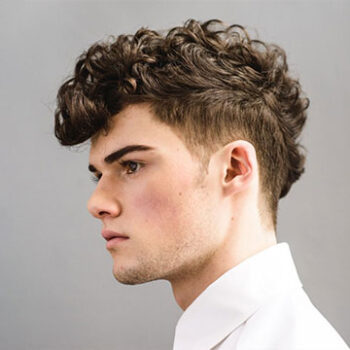Hair restoration has evolved into a precise and sophisticated procedure that offers individuals a chance to regain not only their hair but also their confidence. Whether you’re experiencing a receding hairline or diffuse thinning, a hair transplant can provide permanent and natural-looking results. When considering such a treatment, one of the most commonly asked questions is: what influences the cost? One of the major deciding factors is the number of grafts used during the procedure. For those exploring options in the Middle East, understanding the Hair Transplant Cost in Dubai becomes essential when comparing clinics and expected outcomes.
What is Hair Grafts?
Hair grafts are small pieces of scalp tissue containing hair follicles that are extracted from a donor area (usually the back of the head) and implanted into areas with hair loss. Each graft may contain 1 to 4 hair follicles. The total number of grafts needed is determined by the size of the balding area, hair density, and desired coverage.
Graft Count Breakdown Table:
| Number of Grafts | Approximate Coverage | Hair Loss Stage Addressed |
|---|---|---|
| 500 – 1000 | Minor hairline or crown correction | Norwood 2 |
| 1000 – 2000 | Frontal zone and temple restoration | Norwood 3 |
| 2000 – 3000 | Full front and mid-scalp coverage | Norwood 4 |
| 3000 – 4000+ | Extensive coverage including crown | Norwood 5-6 |
The total graft count directly influences the complexity and duration of the procedure, which is why it is so closely linked to the overall treatment cost.
Why Number of Grafts Impacts Cost
Each hair graft requires careful extraction, preservation, and placement. The process involves:
- Surgeon and technician time
- Specialized instruments and sterile conditions
- Microscopic dissection of grafts
- Post-operative care and medications
As the graft count increases, so does the time and manpower needed, which is reflected in the pricing structure.

Factors Influencing Graft Quantity
Before calculating a potential cost estimate, a surgeon must evaluate the following factors:
1. Extent of Baldness
Larger bald areas require more grafts for full coverage. A patient with only temple thinning may need under 1500 grafts, while full-scale baldness could require over 4000.
2. Donor Hair Density
Higher donor density provides more usable grafts in fewer extractions. Poor donor density may limit how many grafts can be safely extracted.
3. Hair Characteristics
Thicker, curlier, or darker hair can offer better coverage per graft, possibly reducing the total number needed.
4. Desired Density
Some patients prefer a conservative result, while others request a denser, fuller look—affecting how many grafts are recommended.
Techniques and Their Role in Graft-Based Pricing
Different hair transplant techniques also influence how the graft count is calculated and priced:
| Technique | Description | Efficiency per Graft |
|---|---|---|
| FUE (Follicular Unit Extraction) | Individual grafts are extracted using tiny punches | High precision, slightly costlier |
| FUT (Follicular Unit Transplantation) | Strip of scalp is removed and dissected into grafts | Efficient for high graft numbers |
| DHI (Direct Hair Implantation) | Grafts implanted immediately with a Choi pen | Higher cost per graft, no pre-made incisions |
Each technique has its pros and cons, but generally, FUE and DHI are more commonly marketed for aesthetic appeal and faster healing.
The Marketing Angle: “Per Graft” Strategy
Clinics often promote hair transplant costs “per graft,” which simplifies the pricing for patients but can be misleading without full context.
Example of Per Graft Pricing Table:
| Clinic Advertisement | Per Graft Price | Inclusions |
|---|---|---|
| Package A | AED 10/graft | Surgery only |
| Package B | AED 15/graft | Surgery + post-op kit |
| Package C | AED 20/graft | All-inclusive with PRP |
Patients should understand that the quoted cost per graft may or may not include anesthesia, post-op care, medications, or additional treatments like PRP.
Visual Estimation: How Many Grafts You Might Need
A patient can estimate the required grafts based on the Norwood Scale, which measures male pattern baldness.
Norwood Scale to Graft Estimation Table:
| Norwood Stage | Graft Range |
|---|---|
| Stage 2 | 800 – 1200 |
| Stage 3 | 1200 – 1800 |
| Stage 4 | 1800 – 2500 |
| Stage 5 | 2500 – 3200 |
| Stage 6 | 3200 – 4000 |
| Stage 7 | 4000+ |
However, these are only ballpark figures. A consultation with a hair transplant surgeon is necessary to get a customized treatment plan.
Quality vs. Quantity: Does More Grafts Mean Better Results?
Not always. The success of a hair transplant depends not just on how many grafts are used, but how well they are placed.
Key Quality Indicators:
- Natural-looking hairline design
- Proper graft survival
- Even distribution
- Minimal donor area trauma
Overharvesting or poor technique can lead to scarring, patchy results, or graft failure.
Clinical Observations on Graft Efficiency
Studies have shown that patient satisfaction is tied more to proper planning than excessive graft use.
| Clinical Study | Finding |
|---|---|
| International Journal of Trichology (2021) | Optimal density is 35-45 grafts per cm² for natural appearance |
| Hair Transplant Forum International (2019) | Graft survival rate is highest with minimal out-of-body time |
| Journal of Cosmetic Dermatology (2020) | Strategic placement can reduce graft count by 20% |
This confirms that skill and strategy can often reduce the total number of grafts without compromising results.
Common Misunderstandings
- “More grafts = better outcome”
→ Not always. Overpacking can damage blood supply. - “One session solves everything”
→ Extensive baldness may require two sessions spaced months apart. - “Cheap per graft = savings”
→ Low prices may reflect poor hygiene, untrained staff, or reused tools.
Are Graft-Based Packages Worth It?
Some clinics offer all-inclusive graft-based packages, which are appealing for budgeting. However, always check what is included and excluded.
Comparison Table: Package vs. Custom Quote
| Type | Advantage | Risk |
|---|---|---|
| Fixed Package (e.g., 3000 grafts) | Predictable cost | May not suit everyone’s needs |
| Custom Quote | Tailored to patient | May fluctuate based on density, goals |
Transparency and reputation should always guide your final decision.
Final Thoughts
Hair transplant pricing is intricately linked to the number of grafts, but that’s only one part of the equation. Hair Transplant Cost varies depending on technique, clinic reputation, surgeon experience, and additional services. Understanding how grafts work, what affects their usage, and why more isn’t always better helps patients make informed choices. Always prioritize medical expertise, natural-looking results, and safety over marketing gimmicks.




